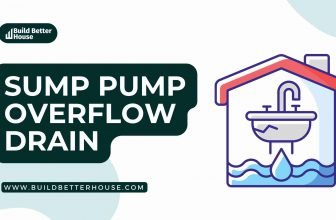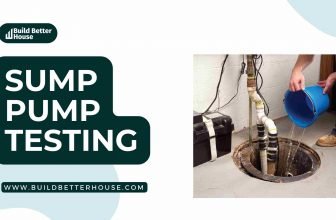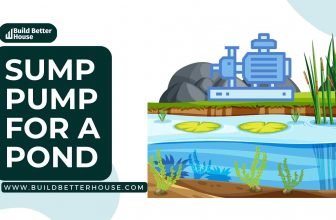Sump Pump Full Of Water: How To Troubleshoot And Fix It

A sump pump full of water can be a major problem for any homeowner. Not only can it cause significant damage to your home, but it can also be costly to fix. From identifying the source of the problem to the steps you need to take to fix it, this guide will walk you through the entire process.
So, if you’re looking for an easy-to-follow guide on troubleshooting and fixing a sump pump full of water, you’ve come to the right place.
Sump Pump Full of Water: Source of The Problem
When determining the root of an issue, it is critical to examine the situation carefully and adequately. Looking for signs that can help you pinpoint the cause of the problem is one of the greatest ways to do this.
For example, if your sump pump is full of water, it could be one of several reasons.
First, it could indicate that the sump pump is malfunctioning. If this is the case, it is critical to inspect the pump itself to ensure that it is in good working order. If the pump is not working correctly, it should be replaced.
It could also indicate that the sump pump is struggling to keep up with the water entering the system. Consider expanding the sump pump’s size to handle the water load in this instance.
It is critical to inspect the pipes and drainage system to see if a problem must be repaired. If the sump pump is full of water, the drainage system may be clogged or not working properly.
Finally, a sump pump full of water may indicate that too much water is entering the system. This could result from solid rainfall, flooding, or a leak someplace in the house. In this instance, it is critical to determine the source of the water and make efforts to prevent it from entering the system.
It is critical to identify the source of the problem to treat it adequately. When dealing with a flooded sump pump, it is critical to examine the issue thoroughly and adequately.
Sump Pump Full of Water: 5 Most Common Mistakes
When your sump pump is full of water, it’s easy to make mistakes that can cause lasting damage. Taking the wrong action could result in costly repairs and long-term safety risks. To ensure that your sump pump full of water isn’t a cause for concern, here are five mistakes you should avoid:
A clogged or burst drain line
One of the most typical reasons for a full sump pit is a clogged, broken, or burst pipe. Because groundwater has nowhere to flow, it will eventually flood your basement.
If you observe a sump pump running with a full pit and the water level is still rising, call a plumber immediately and check for a blockage to prevent damage to your basement floor.
A faulty sump pump motor
A burnt-out sump pump motor is another common cause of flooding in an entire basin. Sump pumps feature potent motors, but the pump motor may burn out after a few years, causing the pit to fill with water.
Defective float switch
When the water level rises, the float switch activates the sump pump. If the float switch becomes stuck, the pump motor will not get a signal, and the basin will remain full of water.
Inadequate check valve
If the check valve is not functional, water will try to enter the discharge pipe but will be stopped by an obstruction. The pipe will eventually burst, but the first symptom will be that the excess water level does not decrease, resulting in a flooded basement.
Electrical issues
Another major cause of a sump pump failure is electrical issues. This could be the reason for the rising water if the pump does not have an electrical connection, backup battery, or water-powered pump.
We recommend checking the sump system with a pail of water to determine if it activates. If the pump does not turn on, the fault could be with your power connection; try connecting an extension cord to another power outlet and see if the pump turns on.
By avoiding these five mistakes, you can ensure that your sump pump is not a source of concern. Investing in appropriate pump maintenance and inspection will save you time, money, and problems in the long run.
Sump Pump Full of Water: Tools Needed
Before you troubleshoot and fix a sump pump full of water, you’ll need a few tools. These include:
- A bucket or container – You’ll need a bucket or container to catch the water from the sump pump. This will make it easy to transfer the water from the sump pump to a garden hose.
- Garden hose – You’ll need a garden hose to transfer the water from the sump pump to a bucket or container.
- Flashlight – A flashlight will be useful for inspecting the sump pump and sump pit.
- Gloves – You’ll need gloves to protect your hands while working in the sump pit.
When repairing a sump pump full of water, it is critical to remember to wear gloves and utilize the correct tools. This will help to ensure that the process is done correctly and that the pump is operational in no time. With the right tools and a little know-how, the pump can be repaired in no time.
Sump Pump Full of Water: Fixations Ways
Your sump pump is full of water. It’s critical repairs the sump pump full of water to prevent future damage. Priming sump pump is essential; let’s look at the most critical parts of it:
- Checking the float switch is one approach to troubleshooting a sump pump full of water. The float switch is in charge of controlling the pump’s operation. If the float switch is trapped in the off position, the water level cannot be detected and pumped out. To resolve this, you must manually reset the switch by moving it up and down.
- Checking the power source is another technique to remedy a sump pump full of water. The pump will not function properly if it does not receive power. To resolve this, check the breaker panel to ensure the switch is turned on. If the switch is in the ‘off’ position, you must turn it back on. You should also inspect the wiring to ensure no weak connections.
- You should also inspect the pump impeller for any debris clogging it. If the impeller becomes clogged, the pump cannot remove the water. To inspect the impeller, remove the sump pump cover and inspect it for any clogs. If you find any, you can remove them using a wire brush.
- If none of the previous measures work, the sump pump may need to be replaced. To minimize more flooding in the house, replacing the sump pump as soon as feasible is critical. When replacing the sump pump, ensure you get the same brand and size as the one you’re replacing.
You can simply repair a sump pump full of water by following these procedures. Make careful to address this issue as quickly as possible to avoid more flooding in the home.
Conclusion
A sump pump full of water is something that many homeowners have to deal with at some point in their lives. A sump pump full of water can cause significant damage to your home and be costly to repair. Thankfully, it’s something that can be fixed with a bit of knowledge and some tools.
So, by following our provided information, you will solve your sump pump full of water issue quickly and efficiently.
Read more:
How to Deodorize Sump Pump: 5 Best Ways
Sprinkler Backflow Preventer Leaking- How To Fix?
How To Fix Clogged Shower Drain? Complete Guide
How To Install And Maintain Garden Hose Check Valve?
3 Best Basement Carpet Ideas for a Cozy Home






